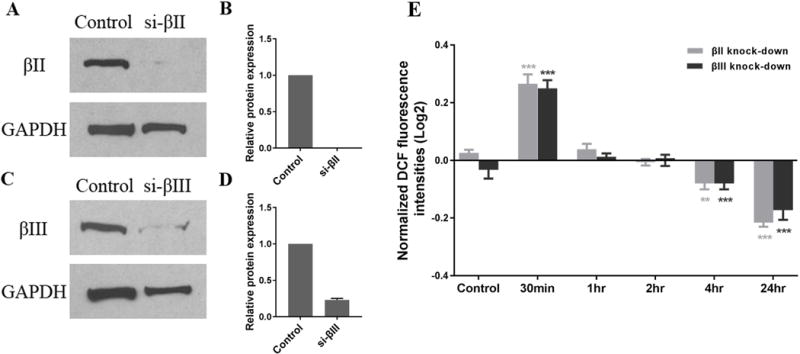FIGURE 1.

Effect of silencing β tubulin isotypes on ROS formation in differentiated SK-N-SH cells treated with glutamate and glycine. Expression of βII (A, B) and βIII (C, D) transfected with isotype-specific siRNA (siRNAs were incubated with cells for 24h) was measured after glutamate/glycine treatment for 24h in differentiated SK-N-SH cells. Negative siRNA was used as a control. GAPDH was used as a loading control. Note that each β isotype decreases significantly. (E) Cells with knockdown β tubulin isotypes were treated with 500 μM glutamate, 100 μM glycine, and 2 mM CaCl2 for the indicated times. Intracellular ROS production was determined by DCF fluorescence as described in Methods. Results are expressed as the log2 of fluorescence intensity normalized to the fluorescence intensity of undifferentiated SK-N-SH cells without any treatment, and are given as the mean ± SD. **ρ< 0.01; ***ρ<0.001 as compared with the control.
